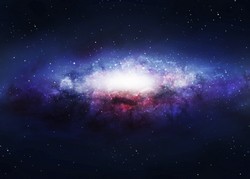What regulates the growth of galaxies?
Popular theories suggest that galaxies grow in clusters – large collections of galaxies bound together by gravity. Their interactions in this dense environment affect how each galaxy grows, forms stars and takes shape. In particular, collisions are key in triggering star formation and altering the morphology of the galaxies. Each galaxy's fate is also partially determined by how massive it was to begin with and when it was formed. The EU-funded project PHIZ-EV (The growth of galaxies) was initiated to find out which of these factors dominated the galaxy's subsequent evolution. The PHIZ-EV astronomers used a massive data set of more than 250 000 distant galaxies from the 'Cosmic assembly near-infrared deep extragalactic legacy survey' (CANDELS). Combining optical and infrared imaging from the Hubble space telescope, this survey documents the evolution of galaxies at a redshift larger than 1.5. CANDELS includes galaxies from when our Universe was about 3 billion years old. By seeing how the average stellar mass of these galaxies changes with time, the PHIZ-EV team could quantify how galaxies evolved as a function of their environment. Having ascertained the galaxies' composition by comparing the observations with hydrodynamic simulations, the scientists built up a picture of galaxy evolution. Moreover, a new method was developed to identify signatures of recent mergers from images of distant galaxies and to link these with the timescales of star formation. By improving on previous analyses, the PHIZ-EV project has opened entirely new windows on the physical processes responsible for galaxy growth. Altogether, the findings will help astronomers determine the role of galaxy mergers in forming the galaxies we see today.
Keywords
Star formation, CANDELS, Hubble space telescope, hydrodynamic simulation, galaxy mergers

